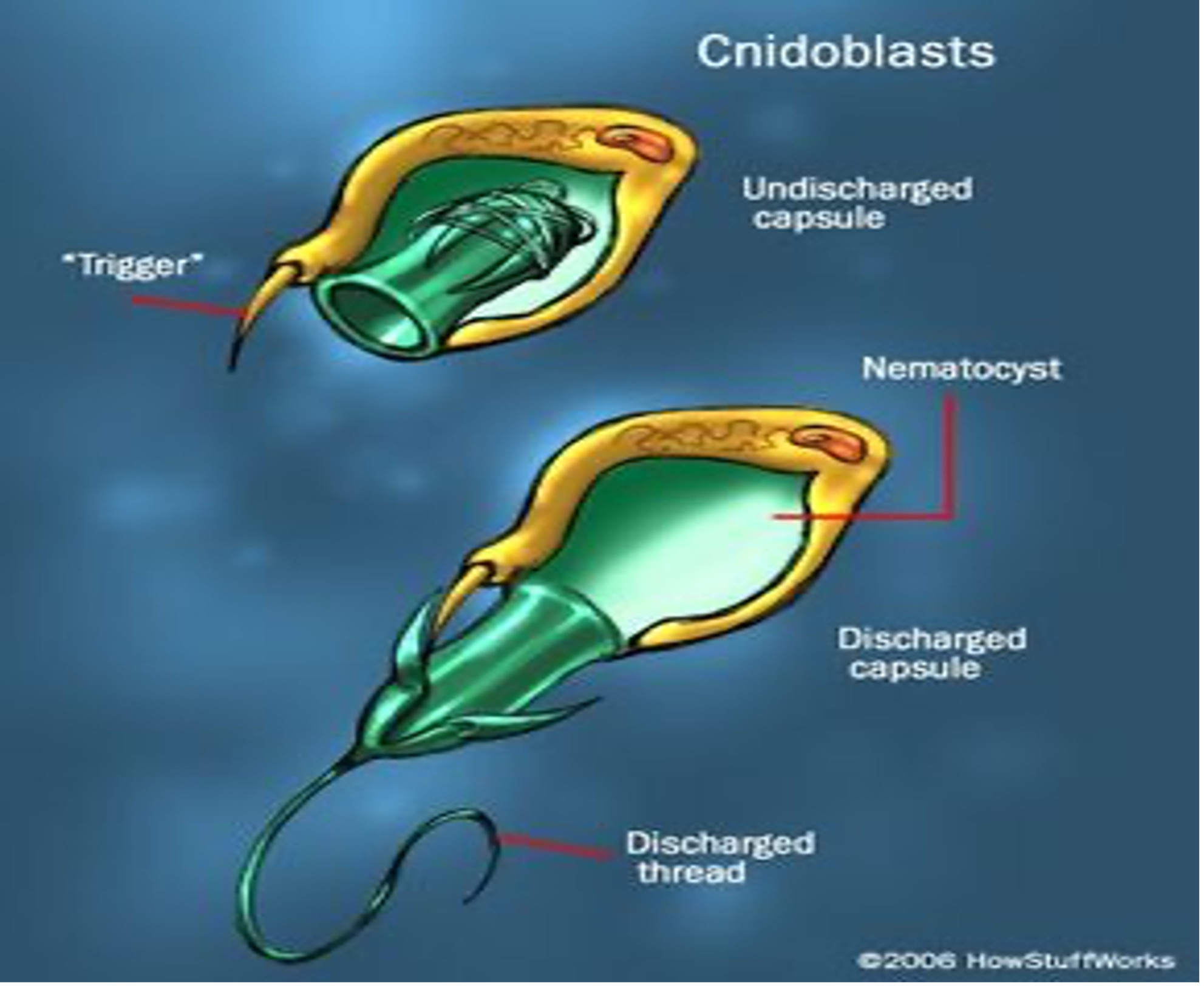By Fanis Michalakis,
Jellyfish belong in the phylum Cnidaria (aka not actual fish despite the name) and are ancient animals. Since they have no hard parts in their bodies, their fossils are rare. However, there are fossils that date back 635 to 577 million years ago in the Neoproterozoic era. Ever since then, and even before, these animals exist in the seas and lakes, floating as the currents carry them around. The phylum is divided into four classes that contain all the species that we call “jellyfish”, each with slightly different characteristics that help us distinguish them. They have simple anatomies, having the bell (main body) with a mouth in the center and gonads inside of it, the oral arms (larger and thicker tentacles), and tentacles that they use to catch prey.

Typically, we are familiar with the adult phase of the life cycle, as they are the ones that are generally shown in the news and pictures. Their life cycle, however, is more complex and there are different stages that a new jellyfish needs to go through before reaching adulthood. The adult free–roaming jellyfish first release their eggs and sperm cells in the water and the eggs are fertilized (sexual reproduction), creating larvae. Then, the larvae will turn into planulae swimming and finding a place on the ocean floor. Then, each planula will become a polyp. The polyp will develop and can reproduce itself asexually (through budding) and will eventually create parts that specialize in certain tasks. One of those parts will specialize in creating ephyra larvae. These will detach from the polyp and will mature into adult jellyfish, and the cycle can start again.

Jellyfish are known for their stings, which harm thousands every year. These stings are their weapons to hunt their prey but we are not their desired meal. Due to the mechanism that activates their sting, though, we can sometimes become the target if we are not careful. The jellyfish has special cells called cnidoblasts all over its body, but mainly on its tentacles. These cells contain the nematocysts in a space with high pressure. On the outside of the cnidoblast cells, there is a trigger, which will be activated by touch. Once activated, water will go inside the cnidoblast, causing the nematocyst to shoot outwards, like a harpoon. The nematocyst can be equipped with spines or hairs that will deposit their poison in the body of its prey once they pierce its skin. Since the cnidoblast can not be used again, it will be absorbed and a new cell will take its place. It is shocking how simple the mechanism is and it is that simplicity and the inability of the jellyfish to prevent the chain of events from happening that can cause us injuries and scars. It should be noted that although many species of jellyfish are not dangerous to humans, some can cause real damage to our tissues, inflict long-lasting pain, and even cause death. On how to treat a jellyfish sting visit this site for step-by-step instructions and practices you should avoid.

As for their ecology, jellyfish play an essential role in the ecosystem. More specifically, they are predators of zooplankton and compete with other animals for the same resources. Thus, they control the populations of both their prey and the other predators’ by preventing them from multiplying rapidly. Moreover, jellyfish are prey to sea turtles and some adult fish. In other words, they are a necessary part of the food web in the ocean ecosystems. Jellyfish, typically in the deep sea, can glow in the dark by using bioluminescence. Usually, animals produce their own luciferin which will react with oxygen thanks to an enzyme called luciferase to produce light. However, researchers have discovered that jellyfish glow in the dark thanks to their diet (consuming prey that itself glows in the dark), meaning that the first jellyfish may not have had this characteristic, but they acquired it sometime later and stuck up until today.
Jellyfish also interact with other species in more ways than just predator-prey. Some animals seek shelter from the jellyfish, swimming among their tentacles and going in their bell. That behavior is observed by juvenile fish, although researchers don’t know how the fish resist the toxins. Some jellyfish create symbiotic relationships with algae, which are microscopic organisms that photosynthesize. Lastly, there are parasites that can latch onto the body of a jellyfish and feed off their nutrients. All these interactions are delicate and can be easily affected by altering the conditions of their environment. Therefore, all the creatures involved are affected by climate change and by the acidification of the oceans with unknown consequences.

In conclusion, jellyfish are fascinating creatures. They existed even before the dinosaurs but have probably changed since then. Even though they are simple in appearance, they are efficient predators wielding deadly weapons that stood through the test of time. And even though we hate seeing them at the beach, they play an important role in maintaining the balance of their ecosystems and sustaining biodiversity all over the world. And all of this by just drifting with the currents.
References
- How the jelly got its glow. amnh.org. Available here
- Baby Fish and Jellyfish: A Power Couple Meets an End. awesomeoean.com. Available here
- Symbiotic relationships. jellipedia.com.au. Available here
- The importance of jellyfish and how their populations are changing. roctopuscotrust.com. Available here




